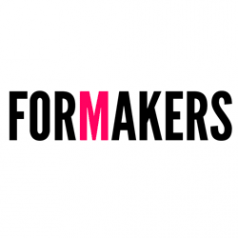20APR 2020
 © When the disease broke, Port-au-Prince’s only waste-filtration plant remained closed following the earthquake, while access to clean water and waste treatment programs was limited.
Along with hundreds of healthcare facilities across the country, GHESKIO quickly deployed cholera treatment tents, intended as a short-term response.
© When the disease broke, Port-au-Prince’s only waste-filtration plant remained closed following the earthquake, while access to clean water and waste treatment programs was limited.
Along with hundreds of healthcare facilities across the country, GHESKIO quickly deployed cholera treatment tents, intended as a short-term response.
 © The tents were difficult to keep sanitary; they were hot in the Haitian climate, deficient at preventing widespread infection, and incapable of providing the human right to dignified healthcare. Dr.
© The tents were difficult to keep sanitary; they were hot in the Haitian climate, deficient at preventing widespread infection, and incapable of providing the human right to dignified healthcare. Dr.
 © Jean William Pape, co-founder of GHESKIO, asked MASS to help create a permanent cholera center. His request was simple and revolutionary: Could the center treat patients with dignity while addressing Haiti’s systemic infrastructural shortcomings?
To reduce the risk of improper waste management, the Cholera Treatment Center was designed to treat waste on-site.
© Jean William Pape, co-founder of GHESKIO, asked MASS to help create a permanent cholera center. His request was simple and revolutionary: Could the center treat patients with dignity while addressing Haiti’s systemic infrastructural shortcomings?
To reduce the risk of improper waste management, the Cholera Treatment Center was designed to treat waste on-site.
 © The clerestory roof admits natural daylight and diverts rainwater that is stored in underground cisterns, treated, and then used in showers and sinks.
© The clerestory roof admits natural daylight and diverts rainwater that is stored in underground cisterns, treated, and then used in showers and sinks.
 © The water is also processed for use in Oral Rehydration Therapy, the primary treatment used to rehydrate patients recovering from cholera. The facility decontaminates waste using a leaching field combined with anaerobic baffled reactor technology.
© The water is also processed for use in Oral Rehydration Therapy, the primary treatment used to rehydrate patients recovering from cholera. The facility decontaminates waste using a leaching field combined with anaerobic baffled reactor technology.
 © The center has the capacity to treat more than 250,000 gallons of sewage a year, helping reduce the area’s water-table contamination.
The building was designed to accommodate one hundred patients at a time.
© The center has the capacity to treat more than 250,000 gallons of sewage a year, helping reduce the area’s water-table contamination.
The building was designed to accommodate one hundred patients at a time.
 © Large fans, high ceilings, and a perforated facade help to move air through the facility. The eight thousand apertures were bent by hand, but digitally designed and evaluated to be optimized for daylighting, ventilation, and privacy.
© Large fans, high ceilings, and a perforated facade help to move air through the facility. The eight thousand apertures were bent by hand, but digitally designed and evaluated to be optimized for daylighting, ventilation, and privacy.
 © Because of the need for routine sterilization, all materials were chosen for their durability and infection-resistant properties.
© Because of the need for routine sterilization, all materials were chosen for their durability and infection-resistant properties.
 ©
MASS worked with GHESKIO’s vocational training workshops, hiring and training victims of abuse to fabricate custom furniture for the CTC. These purpose-built chairs and cots replaced the army cots that had been repurposed for use in the emergency tents.
©
MASS worked with GHESKIO’s vocational training workshops, hiring and training victims of abuse to fabricate custom furniture for the CTC. These purpose-built chairs and cots replaced the army cots that had been repurposed for use in the emergency tents.
 © The bedding fabric of the CTC furniture can be removed during cleaning, allowing them to be safely re-used.
While cholera persists in Haiti today, there has been progress.
© The bedding fabric of the CTC furniture can be removed during cleaning, allowing them to be safely re-used.
While cholera persists in Haiti today, there has been progress.
 © Due to the temporary nature of and funding for the majority of facilities, GHESKIO’s Cholera Treatment Center is one of the only remaining active facilities, now servicing the majority of the city of Port-au-Prince..
© Due to the temporary nature of and funding for the majority of facilities, GHESKIO’s Cholera Treatment Center is one of the only remaining active facilities, now servicing the majority of the city of Port-au-Prince..
 ©
©
 ©
©
 ©
©
 ©
©
 ©
©
 ©
©
 ©
©
 ©
©
 ©
©
 ©
©
 ©
©
 ©
©
 ©
©
GHESKIO Cholera Treatment Center / Mass design group
Posted in Architecture - Healthcare by * FORMAKERS
Cholera—a curable, preventable disease that had not previously existed in Haiti, emerged in 2010 after contaminated waste leaked into the Artibonite River, resulting in rapid spread. ©
©  ©
©  ©
©  ©
©  ©
©  ©
©  ©
©  ©
©  ©
©  ©
©  ©
©  ©
©  ©
©
 ©
©
 ©
©
 ©
©
 ©
©
 ©
©
 ©
©
 ©
©
 ©
©
 ©
©
 ©
©
 ©
©
Comments
No comments
Sign in »


